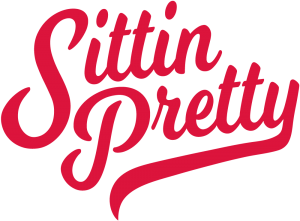The UX (User Experience) is a necessary component to ensure your site ranks for search, particularly, once you’ve managed all standard SEO tactics such as on-page SEO and link building. I mean, if you’ve done all this and you still can’t improve your website’s SERPs (Search Engine Results Position) – it’s likely that it’s your site’s user experience holding you back.
OK, so how do we stop this from being the case? How can you improve the UX of your website? Troubleshooting the user experience can be tricky especially if you’re only used to managing more traditional methods of SEO (Search Engine Optimisation).
Within this post, I’m going to cover some basic steps to help you work on your site UX and ultimately improve it’s search rankings.
What is UX?
The UX (User Experience) is all aspects of your visitors’ interactions with your company, its services and its products. Its function is around the marketing of the site. This is not to be confused with UI (User Interface) which deals with the look and feel of the site such as the font size and colour. Indeed, UX and UI go hand-in-hand, but you should consider the UX first.
How does UX help improve SEO?
Google has worked hard over the last few years to prevent spammy SEO tactics from ranking easily, such as links and keyword stuffing, etc…
As of 2016, RankBrain became the third most important ranking factor of Google’s algorithm. Its main purpose is to improve search results for users by better understanding their search intent.
Google is now focusing on searcher satisfaction because it’s one of those signals that are difficult to fake. It looks at how users respond to the Google results they’ve clicked on, such as if they left your site the moment they arrived (bounced off), or did they interact with your site by completing a form or sharing a link on social.
If a user clicks on your page and leaves without any interaction, that could signal to Google that your site isn’t what they’re looking for.
It makes it look like your result doesn’t match the searchers needs well (searcher intent). As a result, Google thinks, “Maybe this page shouldn’t be ranking so high in the results.”
So how does UX help improve SEO?
UX helps to increase ‘stickiness’ of a page and user interaction.
Delivering a seamless online experience is what makes a visitor “stick” and not bounce. That “stickiness” sends the right quality signals back to Google and indicates that your website is the right result for a given search query.
How to develop your audience to support your site’s UX
UX is driven by a deep understanding of your audience
“Audience” understanding is often overlooked especially in search marketing. If you don’t know your audience then you will be wasting resources chasing people who will not contribute to your growth.
Having a target audience of “everyone” puts you in danger of appealing to no one.
As an example:
When I’m writing this post I need to make sure that it’s found on search by my target customers who need my services in getting their website to rank and convert. My audience isn’t other marketers looking for advice and help on advanced topics.
Your audience should feed your website’s UX – you should want to build everything in a way that it caters to your paying customers (messaging, layouts, tools, etc.).
A better understanding of your audience will help you tailor your online experience to it, which in turn will fuel your growth.
To understand your audience I’d recommend you start by creating persona profiles which are fictional profiles that represent a target audience group.
As an example:
One of my persona profiles could be B2C, SME’s with no marketing personnel.
Try to tailor this down to just 6 persona groups if possible and work out what their needs are, understand what their pain-points are and how you can support them.
By working out your personas you can figure out how to reach people on a more personal level, while delivering the right messages, offers and products at the right time.
For more information on this check out Google’s Blog Post ‘ Marketing Personas Audience Research’.
How to implement UX into your SEO campaign
The importance of UX in SEO is vital, so here’s a process to help you implement UX best practices into your SEO campaigns.
At a high level, this process includes:
- Keyword research and mapping
- URL architecture, Main and Feeder models and user flows
- Practical user conversations
01: KEYWORD RESEARCH AND MAPPING
Your website needs to deliver the right experience for the keywords you’re targeting. This begins with selecting the right keywords and ends with understanding how to use those keywords.
An easy way to start this is by Googling your “main” keywords and using “Related Searches” to dig deeper, this will help you understand what else people are searching for around your root keywords.
As an example:
Below are the related searches for the keyword “Chairs”

From this, I can understand:
- People are looking for chairs by room (office, bedroom, dining room)
Let’s dig a little deeper by searching for ‘office chairs’.

From this, I can workout:
- People are modifying this search by material (leather)
- People are modifying this search by function (ergonomic)
Now, let’s dig deeper by searching “leather office chair” and see what happens.

From this, I can deduce:
- People are modifying this search by style (high back, vintage)
- People are modifying this search by colour (brown, tan)
This is a simple process that should be repeated for every page on your website. It helps you paint a picture of what the searchers are looking for, and gives you a base to build your pages around.
In this example, we could build each chair product page and ensure that users can configure the chair by selecting material, colour, style and function attributes. You may also want to change the architecture to create category pages for each configuration but that’s another topic which I’ll cover in another blog.
02: URL ARCHITECTURE, MAIN & FEEDER, USER FLOWS
If you want to rank for big, competitive keywords, you need a deep, supportive user experience.
I build this out using a “MAIN” and “FEEDER” content-architecture model in these competitive spaces.
- A “MAIN” is the central topic you’re targeting
- “FEEDER” are related topics that directly support your MAIN topic.
To rank for a super competitive keyword, it’s not enough to just launch a single landing page. You need to build an architecture that supports it.
As an example: “Hotels UK”

If someone is looking for the keyword “hotels UK”, they’re probably also interested in things like accommodations, locations, events, dining and so on.
Websites need to support this using a “MAIN” and “FEEDER” content/architecture by building additional landing pages that support the “MAIN” topic, which links down to each “FEEDER” page.
The “FEEDER” pages provided supporting content about various “Hotels UK” room accommodations, romantic getaways, things to do at locations and dining experiences.
Also think about bolstering each page with captivating imagery to help tell the story and increase dwell time by adding interactive features like slideshows and multimedia. All of these elements, will increase interaction and time on page and ultimately the UX experience.
03: PRACTICAL USER CONVERSATIONS
Through conversations with your team and customers you can figure out what the optimal experience is. A lot of UX can be boiled down to practical decisions.
Ask these question at every turn:
If I was a visitor, would I come back to this site?
If I was a visitor, would this page meet/exceed my needs?
You may not get it right the first time around but that’s what is great about digital marketing… you can and should continually test, review and improve your site UX.
Remember to understand your audience and communicate to them on a personal level and optimise their experience by giving them the information and tools they need on page to nudge them towards your goal conversion.
Don’t forget – Good content + stickiness = rankings.
Search satisfaction is Google’s number one priority. If your website doesn’t deliver the right user experience, you’re going to have a hard time getting organic rankings.
Improve your websites UX and see how your rankings follow.
Or, just hire Sittin Pretty to do it for you. 🙂
Take a look at our UX Design Service and our Search Engine Optimisation (SEO) service for further information.
Click Here To Download This Post


6 comments